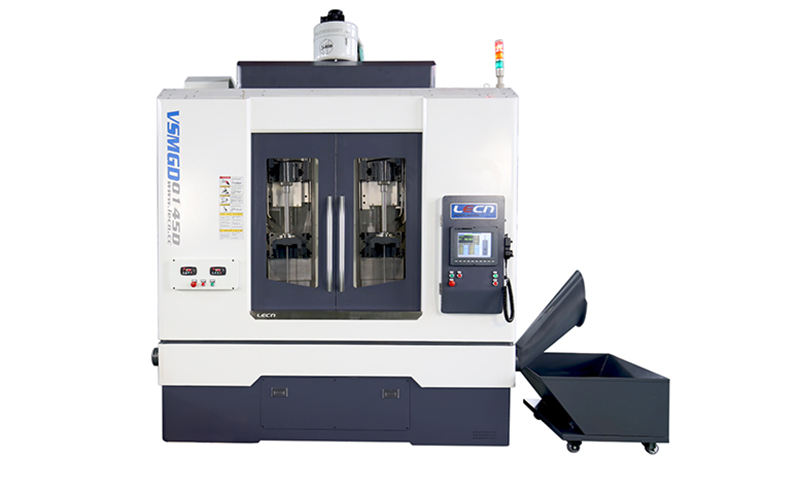Aug. 26, 2025
Deep hole drilling machines are advanced machining tools designed to create precise, long, and straight holes in solid materials. Unlike standard drilling equipment, they are engineered to handle holes with depths up to 150 times the diameter of the drill, making them vital in industries such as aerospace, automotive, energy, and medical device manufacturing. Their accuracy, cooling systems, and chip removal methods make them indispensable for producing high-quality deep holes in hard metals and alloys.

The working principle of a deep hole drilling machine revolves around coolant pressure, effective chip evacuation, and continuous cutting action.
Coolant Supply: High-pressure coolant is delivered through the hollow drill tool, cooling the cutting edge and flushing chips away.
Chip Removal: Effective chip removal ensures that the hole remains straight and prevents tool breakage.
Precision Cutting: The rotating drill bit removes material layer by layer while maintaining strict dimensional accuracy.
Guidance and Support: Tool guides and steady rests are used to prevent deflection and ensure hole straightness.
This principle allows manufacturers to achieve tight tolerances, excellent surface finish, and deep penetration in materials that are otherwise difficult to drill.
There are three primary types of deep hole drilling machines, each designed for specific requirements:
Gun Drilling Machines
Ideal for holes with smaller diameters (1 mm–50 mm).
Used in industries such as medical, automotive, and mold making.
Operation: A single-flute gun drill is guided into the workpiece with continuous coolant flow.
BTA (Boring and Trepanning Association) Machines
Suitable for larger hole diameters (20 mm–200 mm).
Operation: The cutting tool pushes chips backward through the drill tube with coolant pressure.
Common in oil, gas, and heavy machinery manufacturing.
Ejector Drilling Systems
Flexible system combining features of gun drilling and BTA.
Operation: Uses a double-tube coolant system to flush chips out effectively.
Often used in general machining shops with multiple material types.
The process follows a structured sequence:
Setup & Alignment – The workpiece is securely clamped, and the drill is precisely aligned to ensure hole straightness.
Coolant Delivery – High-pressure coolant is introduced to minimize heat and lubricate the cutting area.
Cutting & Material Removal – The drill penetrates slowly, removing material in controlled layers.
Chip Evacuation – Chips are continuously removed from the drilling zone to prevent jamming.
Hole Finishing – Final passes improve surface quality, ensuring dimensional precision.
This process results in holes with excellent surface finish, minimal deviation, and reduced rework needs.
Key components include:
Drill Head: Performs the cutting action.
Coolant System: Provides high-pressure coolant for lubrication and chip removal.
Guide Bushings & Steady Rests: Ensure drill stability and minimize deflection.
Machine Bed: Provides rigidity and stability during drilling.
Chip Evacuation System: Collects and removes chips efficiently.
Control Panel: Enables operators to adjust speed, feed rate, and coolant flow.
Each component plays a role in delivering high accuracy, efficiency, and safety during the drilling operation.
Deep hole drilling machines are widely used across industries:
Aerospace: Turbine shafts, landing gear, and structural components.
Automotive: Fuel injectors, crankshafts, and engine blocks.
Medical: Surgical instruments and orthopedic implants.
Energy Sector: Oil & gas exploration equipment, nuclear power components.
Mold & Die Industry: Cooling channels for plastic injection molds.
These applications demand high precision, repeatability, and reliability, which only deep hole drilling machines can deliver.
Safe operation is critical to protect both operators and equipment:
Wear PPE – Safety glasses, gloves, and protective clothing.
Check Alignment – Ensure workpiece is securely clamped.
Monitor Coolant Pressure – Maintain proper coolant flow for chip evacuation.
Use Correct Tooling – Match drill type with material and hole diameter.
Follow Speed & Feed Guidelines – Prevent tool wear and overheating.
Regular Maintenance – Inspect coolant systems, guide bushings, and drills.
Following safety protocols ensures longer machine life, reduced downtime, and consistent quality.
Choosing the right machine depends on the material and application:
For Hardened Steel & Alloys → BTA machines deliver strength and reliability.
For Small Precision Holes in Medical Instruments → Gun drilling machines provide micron-level accuracy.
For General Applications in Multiple Materials → Ejector systems offer versatility and cost efficiency.
Investing in the right type of deep hole drilling machine ensures optimal performance, reduced tool wear, and higher productivity.
Previous: None
Next: None